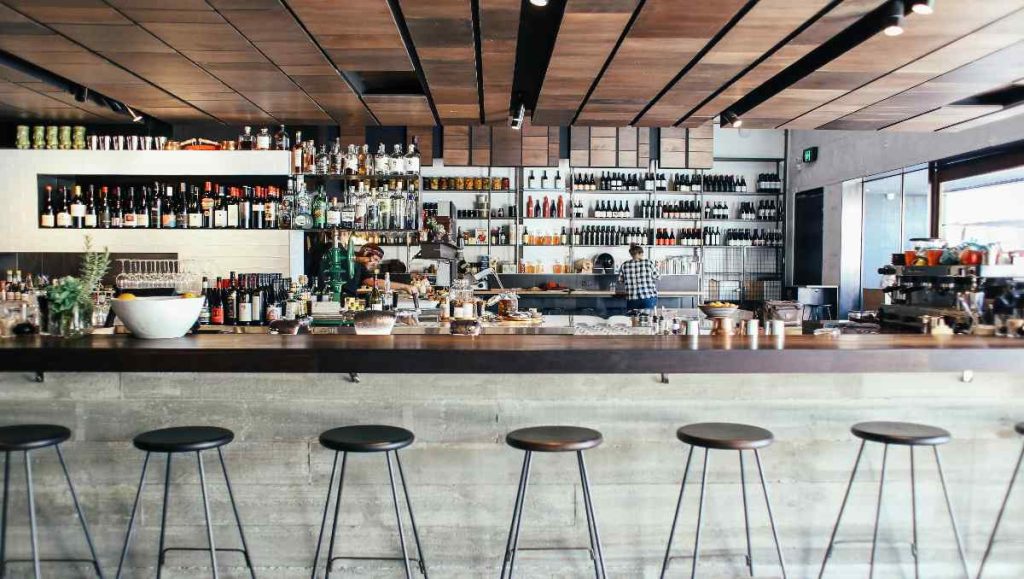
When it comes to designing your dining area or kitchen, selecting the right seating can make a significant difference in both comfort and style. Two popular choices—counter height and bar height seating—offer distinct benefits, but knowing which one is right for you depends on a few key factors. Whether you’re remodeling your space or simply upgrading your furniture, understanding the differences between these two seating heights is crucial for creating a functional and inviting area.
Key Takeaways
- Counter height tables typically measure around 36 inches and pair with stools that are 24 to 26 inches high, while bar height tables stand at 40 to 42 inches, requiring stools that are 28 to 30 inches tall.
- Counter height tables are versatile and comfortable, making them suitable for family dining, while bar height tables create a more social atmosphere, ideal for entertaining.
- Evaluate your room dimensions, preferred seating arrangements, and existing furniture to ensure a harmonious fit with either table height.
This article breaks down the essential characteristics of each option, explore their best uses, and help you decide which height is perfect for your home or business.
Counter Height Table Overview
Counter height tables are about 34 to 36 inches tall, matching most kitchen countertops. They’re perfect for seamless cooking, eating, and socializing. Seating usually includes chairs or stools that are 24 to 26 inches high, offering a comfortable sitting position like standard dining chairs. Popular in casual or open-concept homes, counter height tables also work well in smaller spaces like kitchen islands or breakfast nooks.
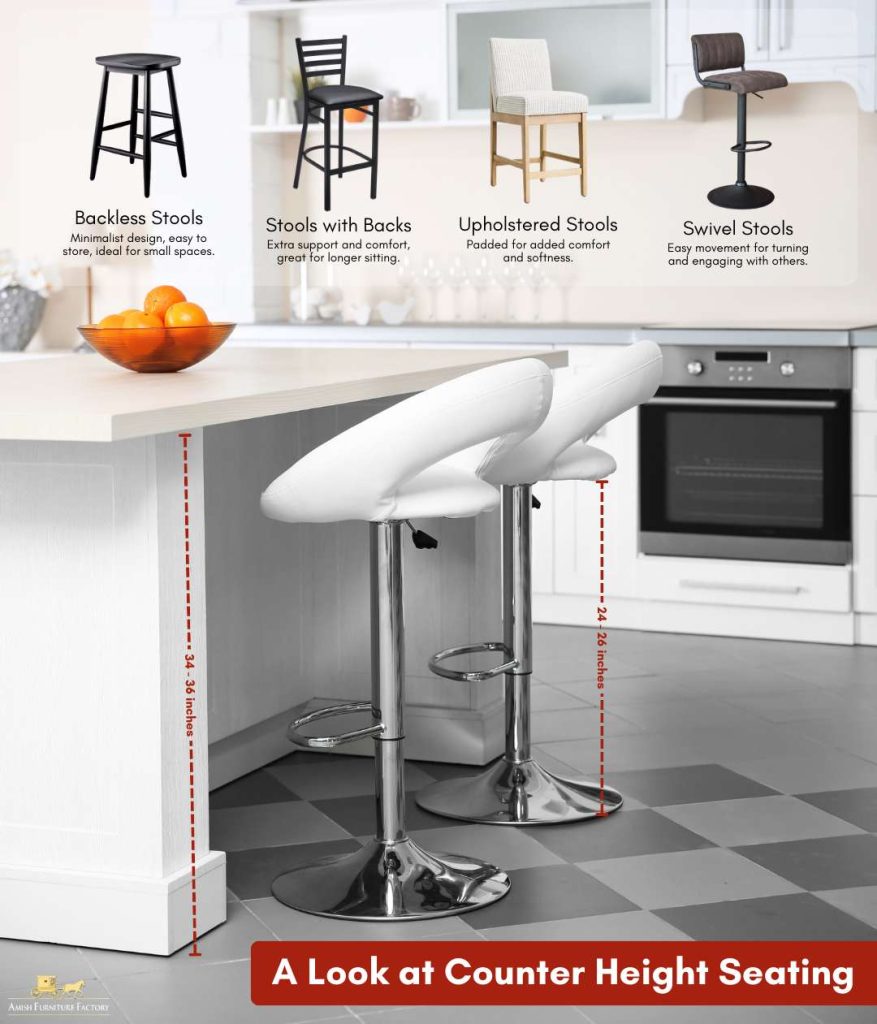
Bar Height Table Overview
Bar height tables are 40 to 42 inches tall, significantly taller than counter height tables. The stools typically have a seat height of 28 to 30 inches, allowing seated guests to be at eye level with standing people—great for social interactions. This height creates a pub-like atmosphere, making them ideal for bars, pubs, and casual settings. They’re perfect for entertainment areas like home bars, game rooms, or trendy restaurants, and also work well on outdoor patios or balconies, offering great views.
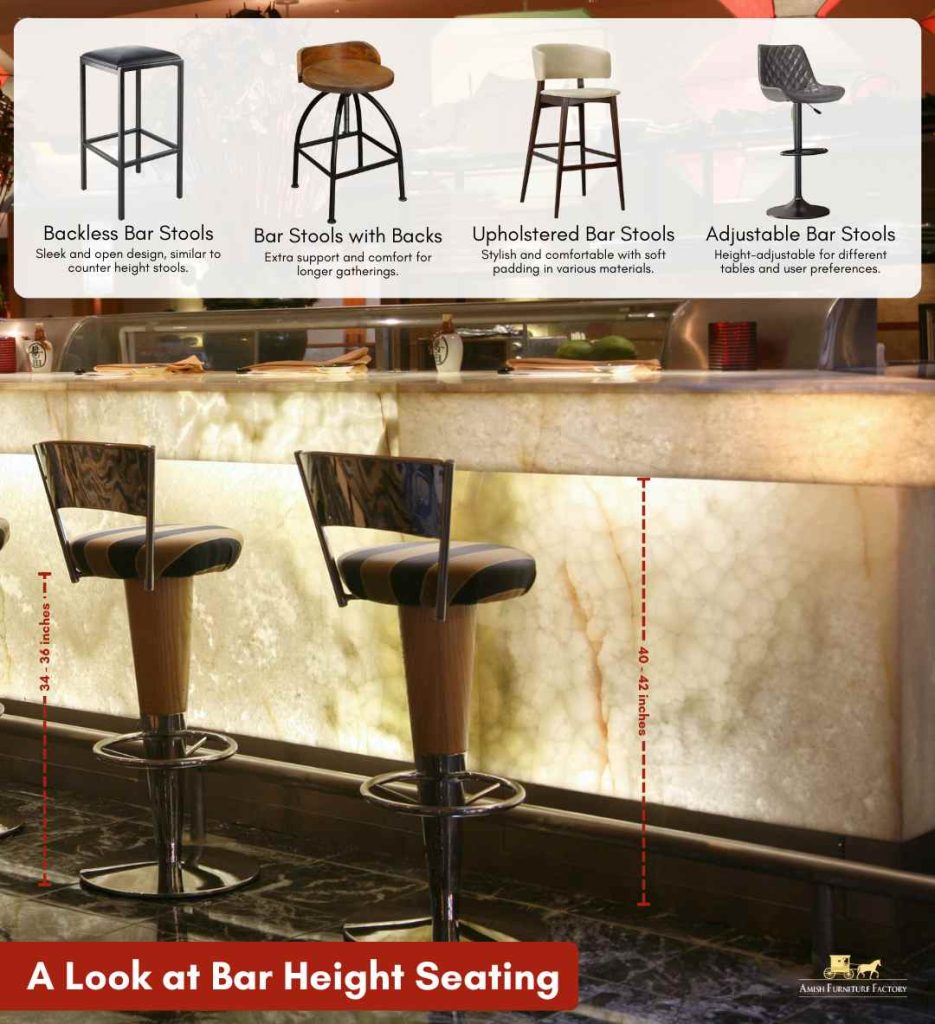
How to Choose Between Counter Height vs. Bar Height?
Understanding the differences and benefits of each option will help you make the right choice for your home and lifestyle. Consider the following factors that will guide your decision.
Consider the Space You Have
Before selecting a table, it’s essential to measure the dimensions of the area where you plan to place it. Make sure to leave enough room for chairs or stools to slide in and out comfortably and for people to move around the table with ease.
For counter height tables, a clearance of at least 24 to 30 inches around the table is recommended, while bar height tables may require a bit more space due to the added height and stool size. Additionally, consider the ceiling height when choosing between counter and bar height options.
Think About the People in Your Home
Consider the workspace and body dimensions of those who will use the table regularly. If you have children, elderly family members, or individuals with mobility issues, counter height tables are often a better choice. The lower seating makes it easier for everyone to sit comfortably and get in and out of chairs.
Bar height tables, with their taller stools, may pose challenges for kids or seniors, making them less practical for everyday use in family settings. If you frequently host guests or entertain, bar height tables can create a more social, relaxed atmosphere, as they encourage standing and mingling.
Match with Your Existing Furniture
A counter height table tends to blend seamlessly with most traditional kitchen and dining setups, especially if you already have standard-height countertops or casual dining spaces.
Bar height tables, on the other hand, can add a modern, elevated look, but may feel out of place in homes with a more formal or classic aesthetic. Ensure the style and height of the table complement the overall theme of your room to create a cohesive design.
If you’re still feeling confused about which to pick, here’s a comparison table you can use as reference:
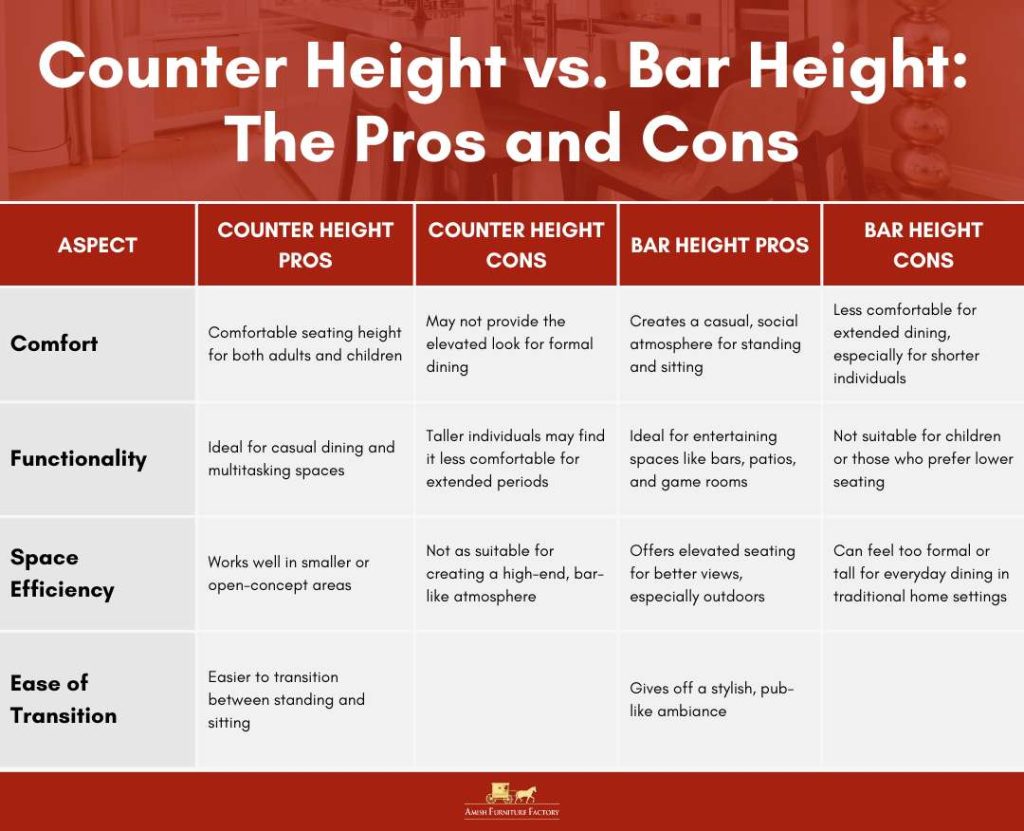
Looking for the perfect table height to match your space? Explore our collection of handcrafted leg tables to find the ideal fit for your home today! Check them out here.
How to Measure Your Space for the Right Table Height
Below is a step-by-step guide to help you measure your room and determine the best table height for your space.
- Measure the Length and Width of the Room:
Use a tape measure to record the length and width of the space, ensuring you account for any fixtures, doorways, or large furniture pieces that might affect the layout. - Determine the Clearance Around the Table:
For comfortable movement, there should be at least 24 to 30 inches of space between the table and walls or other furniture. - Measure for Seating Height:
If you’re considering a counter height table, the seating height should match stools that are 24 to 26 inches tall. For bar height tables, stools should be between 28 to 30 inches. - Check Ceiling Height:
Rooms with lower ceilings (8 feet or less) typically work better with counter height tables. For spaces with taller ceilings, a bar height table can create a more open, elevated feel. - Map Out Table Placement:
Once you’ve measured the room, visualize or sketch where the table and seating will be positioned.
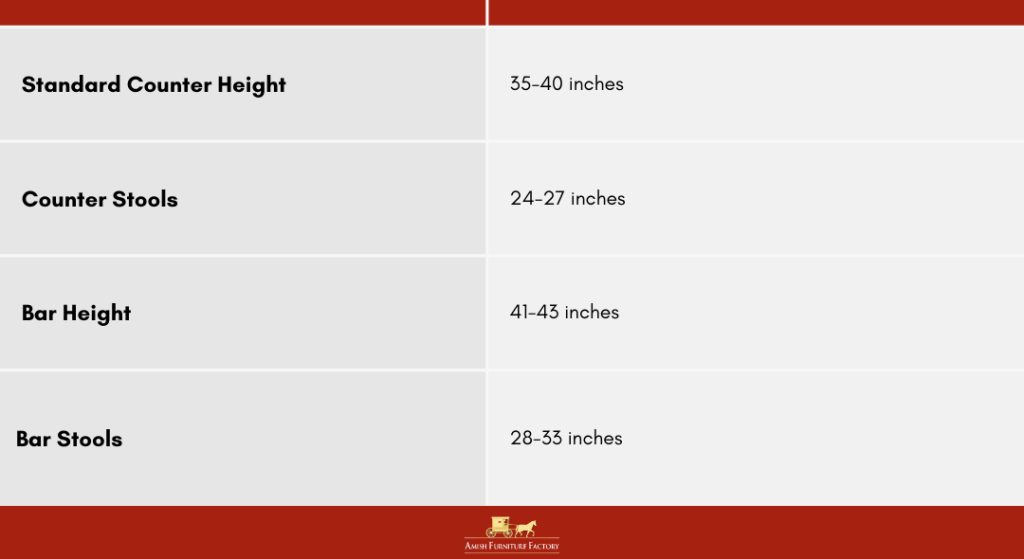
Mixing Counter and Bar Height Seating in One Space
To ensure that the space feels coordinated, choose seating options that share common design elements, such as color, material, or style. Here are some tips you can follow:
Choose Coordinated Designs: Select seating that shares common elements like color, material, or style. For example, if your counter height stools are rustic wood, opt for bar height stools in similar finishes.
Define Functional Areas: Use counter height tables for casual meals in the kitchen and bar height tables in the living area for entertaining. This helps create distinct zones in an open-concept space.
Accessorize Thoughtfully: Use decor that complements both seating types, such as cushions, table runners, or artwork that tie the styles together.
Vary Heights for Visual Interest: Mixing counter and bar heights adds depth and character to the space. Consider how the different heights interact visually.
Prioritize Comfort: Ensure that seating arrangements are comfortable for their intended use. Consider the height difference and how it affects sitting and standing interactions.
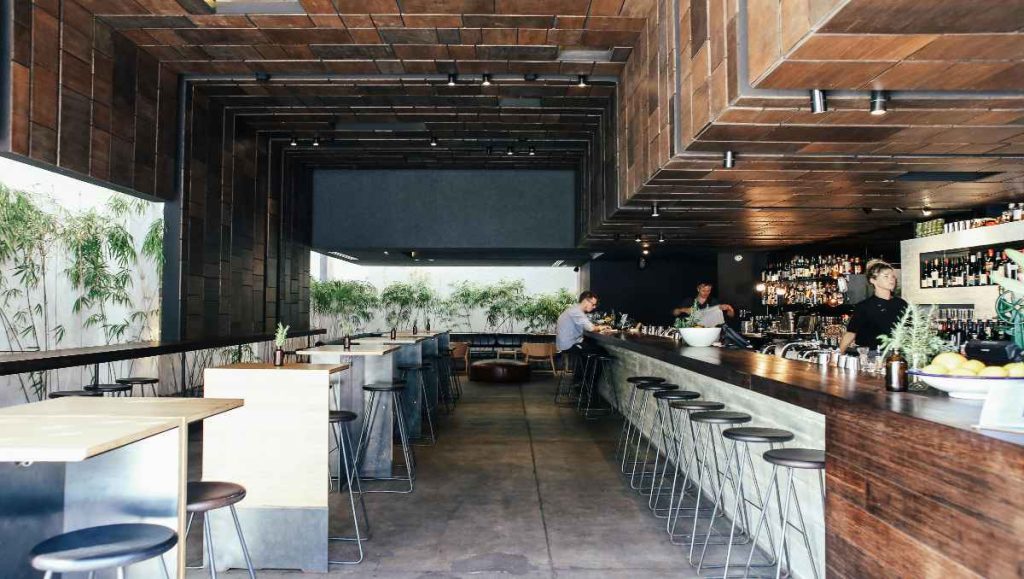
Conclusion
Choosing between counter height and bar height tables involves a few key considerations: your space, lifestyle, and personal preferences.
Counter height tables, at around 36 inches tall, are versatile and comfortable, making them ideal for family-friendly settings. They work well for casual meals and everyday use, providing easy access for everyone. On the other hand, bar height tables, typically 40 to 42 inches, create a more social atmosphere. They encourage interaction and can add a modern touch to your space, making them great for entertaining.
By understanding these differences, you can make an informed choice that enhances both the functionality and style of your home. Whether you prefer the comfort of counter height or the liveliness of bar height, selecting the right table will help you create an inviting environment.
FAQs
What’s the best way to clean and maintain counter height vs. bar height tables?
Generally, a damp cloth with mild soap will suffice for routine cleaning. For wood surfaces, consider using a wood cleaner and conditioner periodically to prevent drying or damage. Avoid harsh chemicals that can harm finishes.
How do I know which stool height to buy for my table?
To determine the right stool height for your table, measure the height from the floor to the underside of the table. A good rule of thumb is to leave about 10 to 12 inches of space between the seat of the stool and the tabletop for optimal comfort.
Are counter height tables more kid-friendly than bar height tables?
Yes, counter height tables are generally more kid-friendly than bar height tables. The lower seating makes it easier for children to climb up and down, promoting safety and independence.
